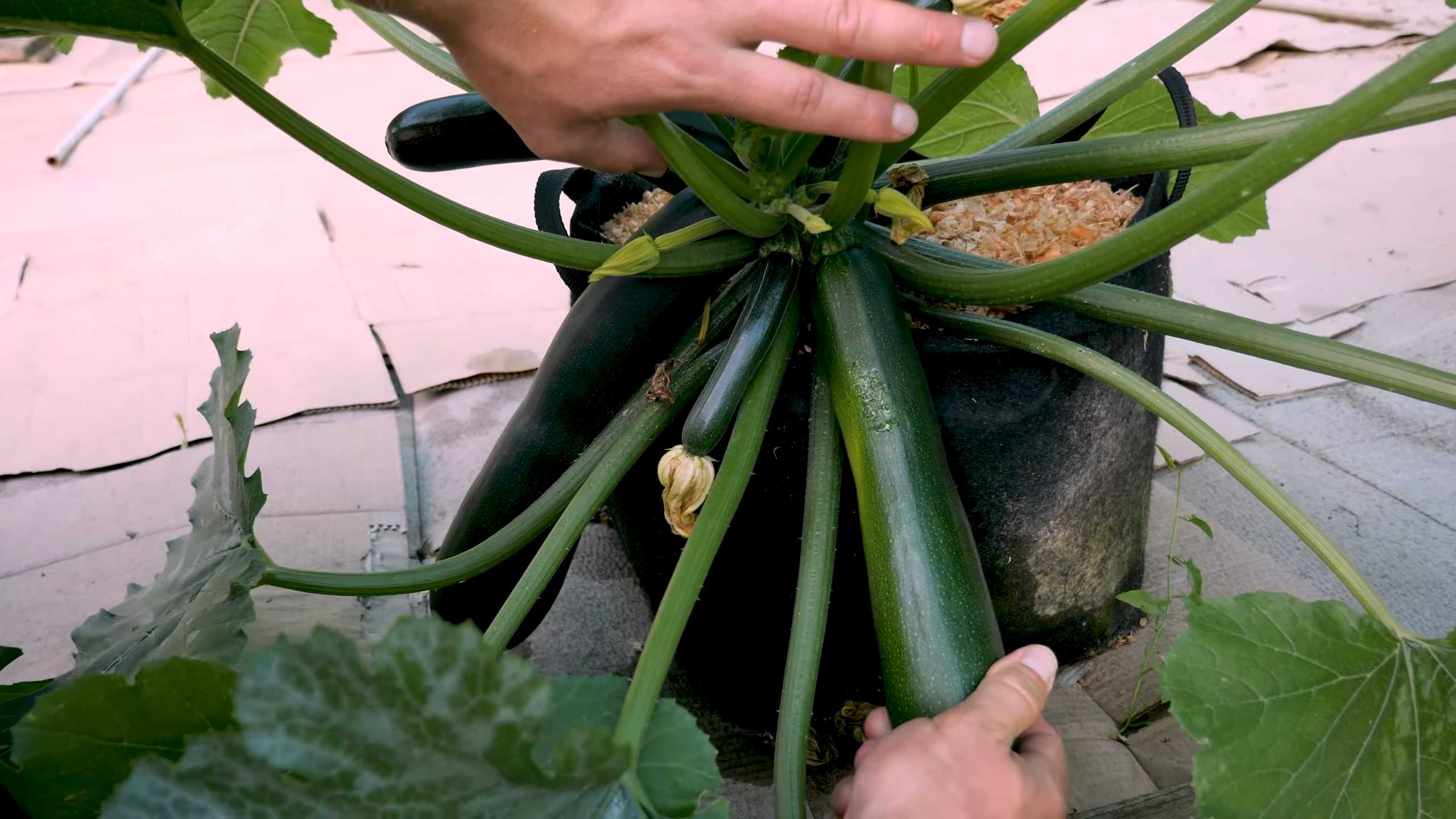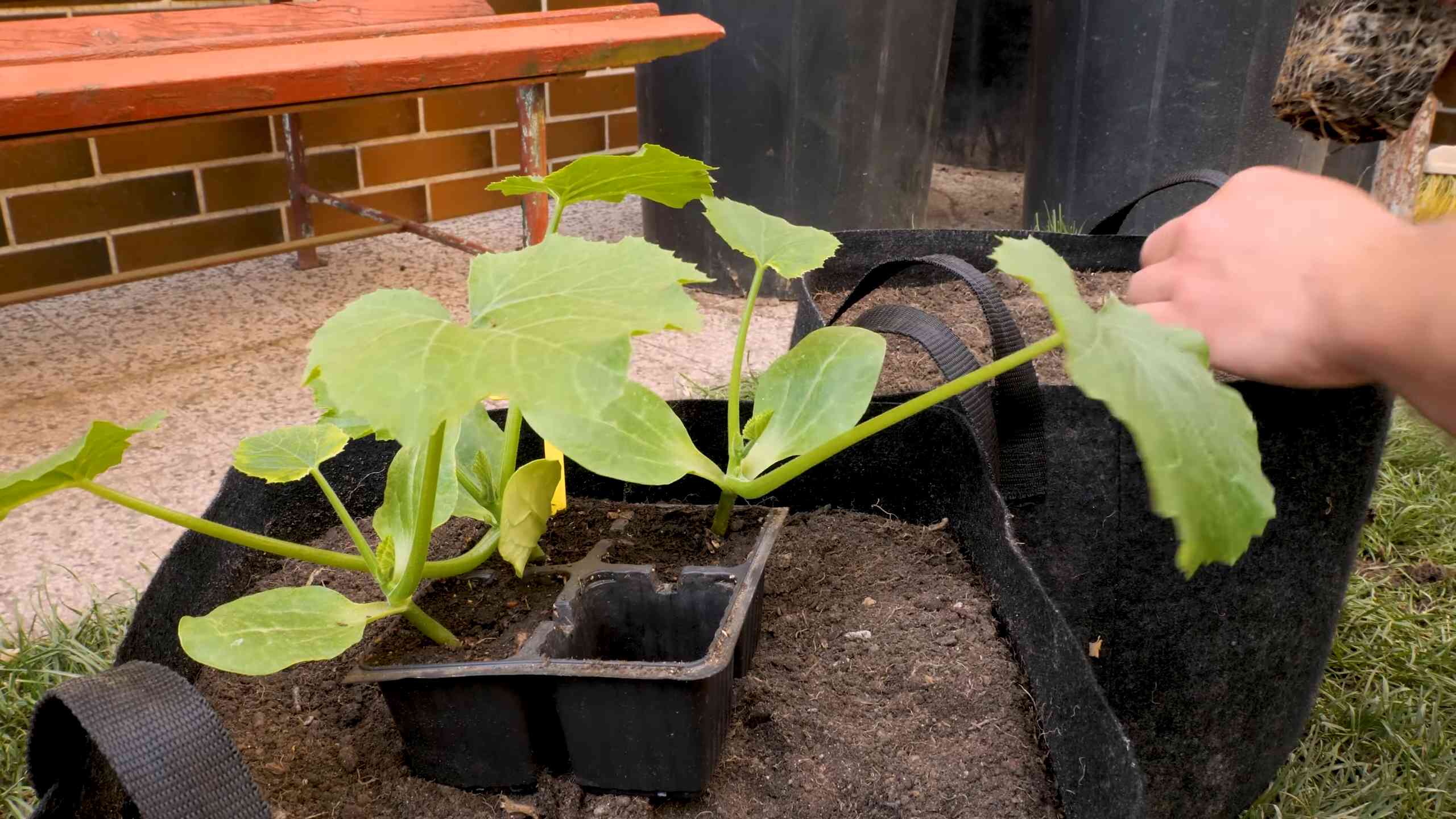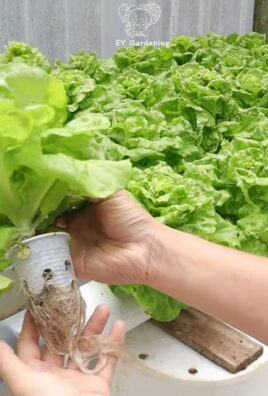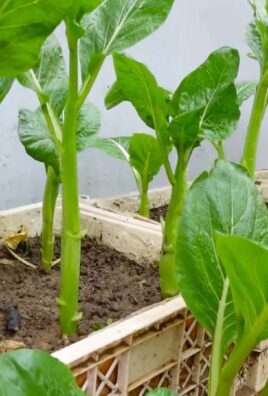Container Sunflowers: Imagine waking up to the cheerful faces of vibrant sunflowers, not in a sprawling field, but right on your balcony or patio! Sounds dreamy, right? Well, it doesn’t have to be just a dream. This DIY guide is your ticket to cultivating these sunny beauties in containers, even if you’re short on space or gardening experience.
Sunflowers have a rich history, symbolizing adoration, loyalty, and longevity in various cultures. From ancient Inca civilizations who revered them as symbols of the sun god to Van Gogh immortalizing them on canvas, sunflowers have always held a special place in our hearts. But you don’t need to be an artist or a farmer to enjoy their beauty.
In today’s busy world, many of us crave a connection with nature, but lack the time or space for a traditional garden. That’s where container sunflowers come in! Growing sunflowers in pots is a fantastic way to bring a touch of the countryside to your urban dwelling. Plus, it’s incredibly rewarding to nurture a tiny seed into a towering, flower-filled plant. I’m going to show you some simple tricks and hacks that will make growing container sunflowers a breeze, even if you’ve never gardened before. Get ready to brighten up your space and impress your friends with your green thumb!

Growing Giant Sunflowers in Containers: A DIY Guide
Hey there, fellow plant enthusiasts! Ever dreamed of having towering sunflowers grace your balcony or patio? Well, you’re in the right place! I’m going to walk you through everything you need to know to successfully grow giant sunflowers in containers. It’s easier than you think, and the results are absolutely stunning. Let’s get started!
Choosing the Right Sunflower Variety
First things first, not all sunflowers are created equal. While those adorable dwarf varieties are perfect for small pots, we’re aiming for giants here! So, you’ll need to choose a variety known for its impressive height. Here are a few of my favorites:
* Mammoth Sunflower: This is a classic choice, known for its massive heads and towering height (often reaching 8-12 feet!).
* Russian Giant: Similar to Mammoth, these sunflowers produce huge heads and can grow just as tall.
* Skyscraper Sunflower: As the name suggests, these can reach incredible heights, sometimes exceeding 12 feet!
* American Giant: Another reliable giant variety that produces large, impressive blooms.
Important Note: Always check the seed packet for the expected height of the sunflower variety you choose. This will help you select an appropriately sized container.
Gathering Your Supplies
Okay, now that we’ve picked our sunflower superstar, let’s gather the necessary supplies. Here’s what you’ll need:
* Sunflower Seeds: Obviously! Choose your desired giant variety.
* Large Container: This is crucial! For giant sunflowers, you’ll need a container that’s at least 24 inches in diameter and 24 inches deep. The bigger, the better, as it will provide ample space for the roots to grow.
* High-Quality Potting Mix: Don’t skimp on this! Use a well-draining potting mix specifically formulated for containers. Avoid using garden soil, as it can become compacted and doesn’t drain well in pots.
* Slow-Release Fertilizer: This will provide your sunflowers with a steady supply of nutrients throughout the growing season.
* Watering Can or Hose: For, well, watering!
* Stakes or Support System: As your sunflowers grow tall, they may need some extra support to prevent them from toppling over, especially in windy conditions.
* Optional:
* Seed Starting Tray: If you want to get a head start on the growing season, you can start your seeds indoors.
* Gardening Gloves: To keep your hands clean.
* Trowel: For planting.
Planting Your Sunflower Seeds
Alright, let’s get our hands dirty! Here’s how to plant your sunflower seeds:
1. Choose Your Planting Time: Sunflowers are warm-weather plants, so it’s best to plant them after the last frost. Check your local frost dates to determine the best time to plant in your area. I usually wait until the soil has warmed up to at least 60°F (15°C).
2. Prepare Your Container: Fill your container with the high-quality potting mix, leaving about an inch or two of space at the top.
3. Sow the Seeds: Make a small hole (about 1 inch deep) in the center of the container. Place 2-3 sunflower seeds in the hole. This increases the chances of at least one seed germinating.
4. Cover the Seeds: Gently cover the seeds with potting mix and lightly pat down the soil.
5. Water Thoroughly: Water the container thoroughly until the water drains out of the bottom. This will help settle the soil and ensure that the seeds have enough moisture to germinate.
6. Optional: Starting Seeds Indoors: If you’re starting seeds indoors, sow them in a seed starting tray filled with seed starting mix. Follow the same steps as above, and keep the tray in a warm, sunny location. Once the seedlings have developed a few sets of true leaves, you can transplant them into your large container.
Caring for Your Growing Sunflowers
Now comes the fun part – watching your sunflowers grow! Here’s how to care for them:
1. Watering: Sunflowers need consistent moisture, especially during hot weather. Water deeply whenever the top inch of soil feels dry to the touch. Avoid overwatering, as this can lead to root rot.
2. Fertilizing: Apply a slow-release fertilizer according to the package directions. You can also supplement with a liquid fertilizer every few weeks to give your sunflowers an extra boost. I like to use a balanced fertilizer with equal parts nitrogen, phosphorus, and potassium.
3. Sunlight: Sunflowers are sun-worshippers! They need at least 6-8 hours of direct sunlight per day to thrive. Place your container in a sunny location where your sunflowers will receive plenty of light.
4. Staking: As your sunflowers grow taller, they may need some extra support to prevent them from toppling over. Insert a sturdy stake into the container near the base of the plant and gently tie the stem to the stake with soft twine. You can also use a tomato cage or other support system.
5. Pest Control: Keep an eye out for common sunflower pests, such as aphids, spider mites, and snails. If you notice any pests, you can try spraying them with insecticidal soap or neem oil. You can also hand-pick snails and slugs off the plants.
6. Deadheading: Once the sunflower blooms have faded, you can deadhead them by cutting off the spent flower heads. This will encourage the plant to produce more blooms.
Harvesting Sunflower Seeds
If you’re growing sunflowers for their seeds, here’s how to harvest them:
1. Wait for Maturity: The sunflower head is ready to harvest when the back of the head turns brown and the petals begin to dry and fall off. The seeds should be plump and slightly loose.
2. Protect from Birds: Birds love sunflower seeds! To prevent them from eating all your seeds, you can cover the sunflower head with a paper bag or cheesecloth.
3. Harvest the Head: Once the sunflower head is ready, cut it off the stem with a sharp knife.
4. Dry the Head: Hang the sunflower head upside down in a dry, well-ventilated place for a few weeks to allow the seeds to dry completely.
5. Remove the Seeds: Once the head is dry, you can remove the seeds by rubbing the head with your hands or a stiff brush.
6. Store the Seeds: Store the sunflower seeds in an airtight container in a cool, dry place.
Troubleshooting
Even with the best care, you might encounter a few challenges along the way. Here are some common problems and how to address them:
* Leggy Growth: If your sunflowers are growing tall and spindly with few leaves, they’re likely not getting enough sunlight. Move them to a sunnier location.
* Yellowing Leaves: Yellowing leaves can be a sign of overwatering or nutrient deficiency. Check the soil moisture and adjust your watering schedule accordingly. You may also need to fertilize your sunflowers.
* Drooping: Drooping can be caused by underwatering, heat stress, or root rot. Water deeply and provide shade during the hottest part of the day. If you suspect root rot, check the drainage of your container and make sure the soil is not waterlogged.
* Lack of Blooms: If your sunflowers are not blooming, they may not be getting enough sunlight or fertilizer. Make sure they’re in a sunny location and fertilize them regularly.
Enjoying Your Giant Sunflowers
Growing giant sunflowers in containers is a rewarding experience. Not only will you have beautiful, towering plants to admire, but you’ll also attract pollinators like bees and butterflies to your garden. Plus, you’ll have a supply of delicious sunflower seeds to enjoy! So, get out there and start planting! I promise, you won’t regret it. Happy gardening!

Conclusion
So, there you have it! Growing your own container sunflowers isn’t just a fun project; it’s a rewarding experience that brings a burst of sunshine right to your doorstep. We’ve walked you through the simple steps, from selecting the perfect variety to nurturing your seedlings and providing the right support. But why is this DIY trick a must-try?
Firstly, it’s incredibly accessible. You don’t need acres of land or a green thumb of steel. A sunny balcony, a patio, or even a well-lit windowsill can become your sunflower haven. Secondly, it’s a fantastic way to connect with nature, especially for those living in urban environments. Watching your tiny seeds sprout and transform into towering, vibrant blooms is a truly magical process. Thirdly, and perhaps most importantly, growing container sunflowers allows you to enjoy the beauty and benefits of these magnificent plants, regardless of your space constraints.
Beyond the basic method, there are countless ways to personalize your container sunflower journey. Consider experimenting with different dwarf varieties to create a colorful tapestry of blooms. Try companion planting with herbs like basil or rosemary to deter pests and enhance the overall health of your sunflowers. You could even get creative with your container choices, using repurposed buckets, decorative pots, or even woven baskets to add a touch of rustic charm to your garden.
For a truly unique twist, try succession planting. Sow seeds every few weeks to ensure a continuous display of sunflowers throughout the growing season. This will keep your garden vibrant and buzzing with pollinators for months on end. Another variation is to focus on growing sunflowers specifically for their seeds. Select varieties known for their large, edible seeds and enjoy a healthy and delicious snack straight from your garden. Roasting the seeds with a touch of salt and your favorite spices is a fantastic way to savor the fruits (or rather, seeds) of your labor.
Don’t be afraid to experiment with different soil mixes and fertilizers to find what works best for your specific growing conditions. Remember, every garden is unique, and what thrives in one location may need a little tweaking in another. The key is to observe your plants closely, pay attention to their needs, and adjust your approach accordingly.
We wholeheartedly encourage you to give this DIY trick a try. It’s a simple, affordable, and incredibly satisfying way to bring beauty, joy, and a touch of nature into your life. And most importantly, don’t forget to share your experience with us! We’d love to see your photos, hear your stories, and learn from your successes (and even your challenges). Tag us on social media using #ContainerSunflowers or leave a comment below to share your journey. Let’s create a community of sunflower enthusiasts and spread the sunshine together!
Frequently Asked Questions (FAQ)
What is the best type of sunflower to grow in a container?
The best sunflowers for containers are dwarf varieties, which are specifically bred to stay compact and manageable. Popular choices include ‘Teddy Bear’, ‘Elf’, ‘Sundance Kid’, and ‘Little Becka’. These varieties typically reach heights of 1-3 feet, making them ideal for pots and planters. Taller varieties can be grown in containers, but they require larger pots and may need extra support to prevent them from toppling over. Consider the size of your container and the amount of sunlight your space receives when selecting a sunflower variety.
How big of a container do I need for sunflowers?
The size of the container depends on the variety of sunflower you’re growing. For dwarf varieties, a pot that is at least 12 inches in diameter and 12 inches deep is generally sufficient. For taller varieties, you’ll need a larger container, at least 18 inches in diameter and 18 inches deep. Ensure the container has drainage holes to prevent waterlogging, which can lead to root rot. Using a container that is too small can restrict root growth and result in stunted plants.
What kind of soil should I use for container sunflowers?
Sunflowers thrive in well-draining soil that is rich in organic matter. A good potting mix for container sunflowers should consist of a blend of peat moss, perlite, and vermiculite. You can also amend the soil with compost or aged manure to provide additional nutrients. Avoid using garden soil in containers, as it can become compacted and poorly drained. A slightly acidic to neutral pH (around 6.0 to 7.5) is ideal for sunflower growth.
How much sunlight do container sunflowers need?
Sunflowers are sun-loving plants and require at least 6-8 hours of direct sunlight per day to thrive. Place your container sunflowers in a location that receives ample sunlight throughout the day. If you live in a particularly hot climate, you may need to provide some afternoon shade to prevent the plants from scorching. Insufficient sunlight can result in weak, leggy growth and reduced flowering.
How often should I water my container sunflowers?
Water your container sunflowers regularly, especially during hot and dry weather. The soil should be kept consistently moist, but not waterlogged. Check the soil moisture by sticking your finger about an inch into the soil. If the soil feels dry, it’s time to water. Water deeply, allowing the water to drain out of the drainage holes. Avoid overhead watering, as this can promote fungal diseases.
Do container sunflowers need fertilizer?
Yes, container sunflowers benefit from regular fertilization. Use a balanced fertilizer (e.g., 10-10-10) every 2-3 weeks during the growing season. You can also use a slow-release fertilizer at planting time. Avoid over-fertilizing, as this can lead to excessive foliage growth at the expense of flowering. Follow the instructions on the fertilizer label carefully.
How do I protect my container sunflowers from pests and diseases?
Sunflowers can be susceptible to pests such as aphids, spider mites, and sunflower beetles. Regularly inspect your plants for signs of infestation and take action promptly. You can use insecticidal soap or neem oil to control these pests. Fungal diseases such as powdery mildew and rust can also affect sunflowers. Ensure good air circulation around your plants and avoid overhead watering to prevent these diseases. If necessary, use a fungicide to control fungal infections.
How do I support my container sunflowers?
Taller sunflower varieties may need support to prevent them from toppling over, especially in windy conditions. You can use stakes, trellises, or cages to provide support. Insert the stakes or trellis into the container at planting time to avoid damaging the roots later. Tie the sunflower stems to the support using soft twine or plant ties.
Can I grow container sunflowers indoors?
While it’s possible to start sunflower seeds indoors, they require a lot of light and space to thrive. It’s generally best to grow sunflowers outdoors in containers. If you do grow them indoors, make sure to provide them with at least 6-8 hours of direct sunlight per day or supplement with grow lights.
How long does it take for container sunflowers to bloom?
The time it takes for container sunflowers to bloom depends on the variety and growing conditions. Generally, sunflowers will bloom within 80-120 days from planting. Dwarf varieties tend to bloom sooner than taller varieties. Providing adequate sunlight, water, and nutrients will help your sunflowers bloom sooner.




Leave a Comment